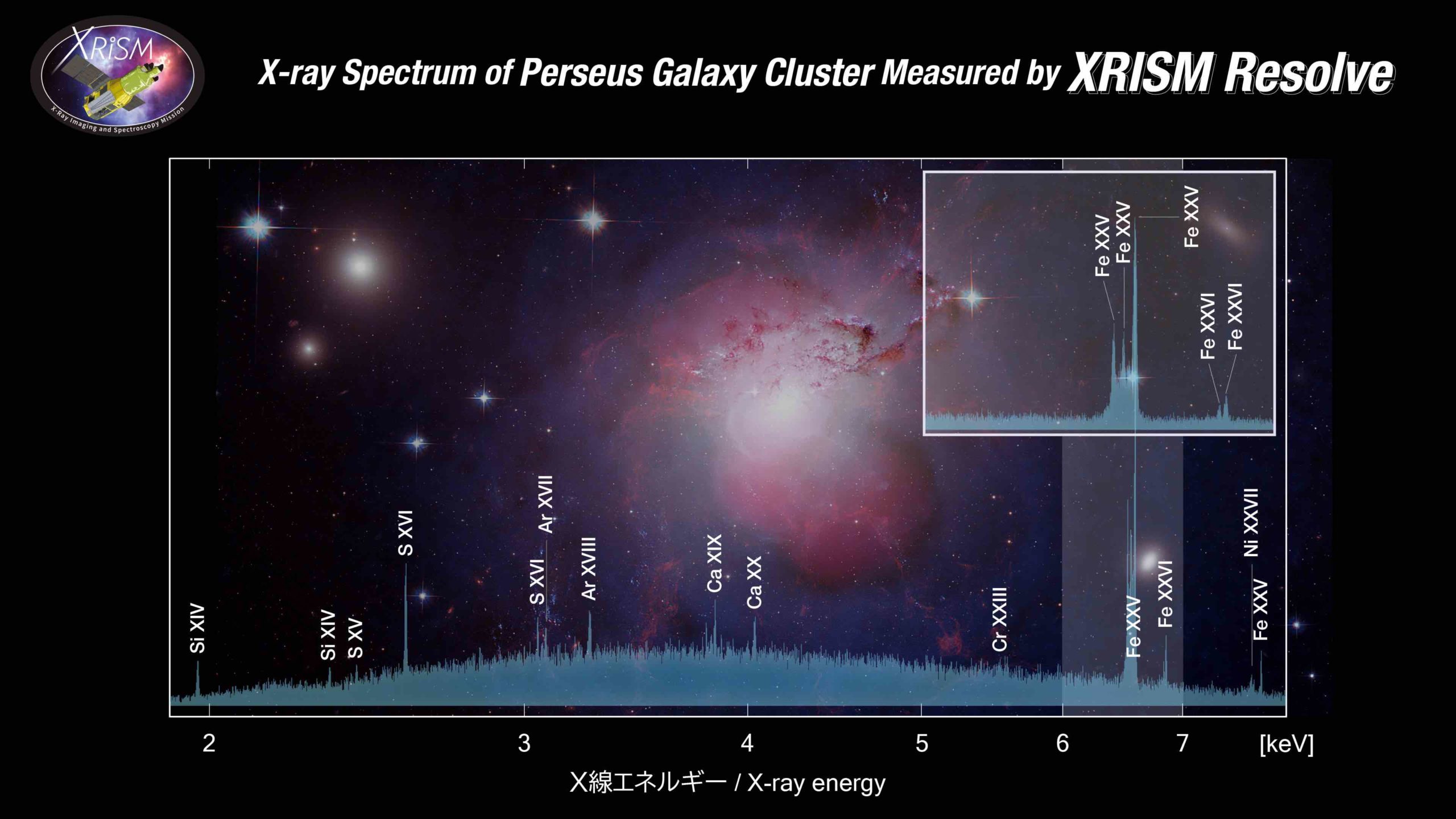
 Credit: JAXA/NASA/CXC/IoA/A.Fabian et al./NRAO/VLA/G. Taylor/ESA/Hubble Heritage (STScI/AURA) /Univ. of Cambridge)
Credit: JAXA/NASA/CXC/IoA/A.Fabian et al./NRAO/VLA/G. Taylor/ESA/Hubble Heritage (STScI/AURA) /Univ. of Cambridge)
Dissecting Perseus
Some of the largest reservoirs of normal "baryonic" matter are the massive collections of hot diffuse gas that lies within clusters of galaxies. Galaxy clusters consist of hundreds or thousands of individual galaxies, each containing many hundreds of millions or billions of stars, held bound by their mutual gravity. Galaxy clusters are among the largest and most massive gravitationally-bound structures we know of, and thus are the key objects which define the cosmic web of the material Universe. The gas between the cluster galaxies is very hot, nearly invisible in the optical region of the electromagnetic spectrum but hot enough to radiate strongly in X-rays. X-ray studies have thus provided most of our knowledge about this hot gas, and our best constraints on its origin, energetics, and composition. The image above shows a new observation of the X-ray emission from the Perseus cluster of galaxies by the XRISM X-ray observatory, a Japanese-US-European space mission. This XRISM observation shows the X-ray spectrum, that is, the brightness of the X-ray emission versus X-ray energy. Bright narrow spikes show emission by individual groups of hot atoms that have lost almost all but one or two of their electrons. The spectrum is superimposed on a composite X-ray, visible light, and radio image of the cluster which shows some of the diffuse, X-ray emitting intracluster gas and the optical emission of the individual galaxies. The inset highlights a region of the spectrum dominated by emission from iron atoms, a common element produced in stellar explosions, a particularly important tracer of chemical enrichment and energetics. The XRISM observation of Perseus builds upon an earlier observation of the high-resolution X-ray spectrum by the Hitomi X-ray observatory.
Published: March 11, 2024
<
HEA Dictionary ● Archive
● Search HEAPOW
● Other Languages
● HEAPOW on Facebook
● Download all Images
● Education ● HEAD
>

Each week the HEASARC
brings you new, exciting and beautiful images from X-ray and Gamma ray
astronomy. Check back each week and be sure to check out the HEAPOW archive!
Page Author: Dr. Michael F. Corcoran
Last modified Monday, 18-Mar-2024 07:35:53 EDT


